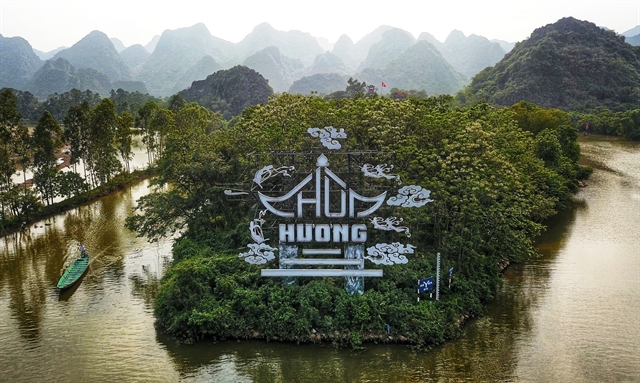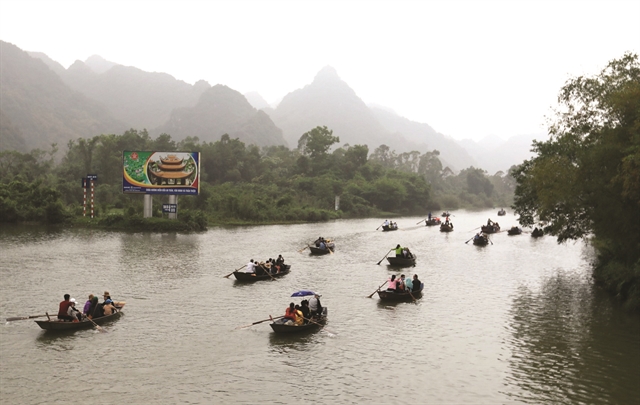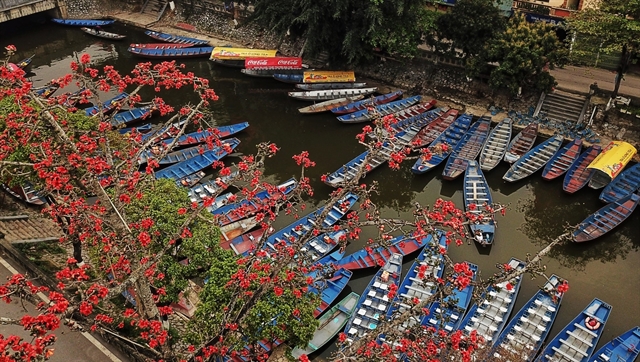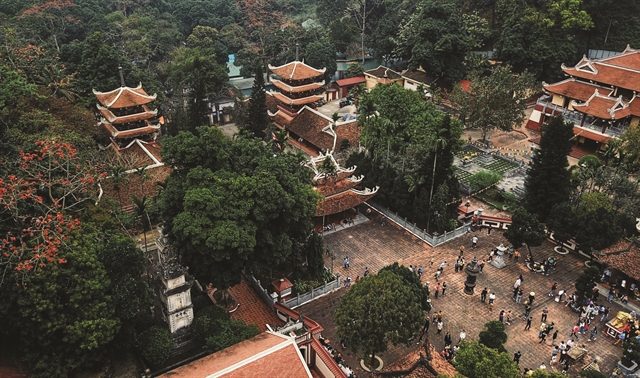 Life & Style
Life & Style

The annual pilgrimage festival to Hương Pagoda, a great religious site as well as a scenic complex, some 65km to the west of central Hà Nội, has officially opened after closing due to COVID-19 pandemic.
Hương (Perfume) Pagoda, located in Hương Sơn Commune, Mỹ Đức District, consists of a vast complex of Buddhist temples and shrines built on limestone Hương Tích mountains.

|
| The entrance to the site. VNA/VNS Photo Thành Đạt |
Every year, the site hosts a large number of pilgrims from all over the country. The pilgrimage festival starts from the 6th day of the lunar year, while the peak of the festival falls between 15th day of the first lunar month to 18th day of the second lunar month. Yet the spectacular landscape draws tourists also throughout the year.

|
| Boats at Đục Dock ready for visitors. VNA/VNS Photo Thành Đạt |
Hundreds of pagodas and shrines are scattered along the Yến Stream including Chùa Ngoài (Outer Pagoda) and Chùa Trong (Inner Pagoda).
The centre of the complex is the Hương Pagoda proper deep inside Hương Tích Cave.
Tourists take a boat trip from Đục Dock to Outer Pagoda, which was also named Trò Pagoda.

|
| Taking a cruise along Yến Stream is a fantastic journey. VNA/VNS Photo Thành Đạt |
Hương Pagoda was built at the end of 17th century inside Hương Tích Cave, which was then almost totally destroyed during the French invasion in 1947. In 1988, the pagoda was rebuilt by late monk Thích Thanh Chân.
Visitors will find the phrase “”Hương Tích Động Môn” (The Gate of Hương Tích Cave) carved at the entrance of the cave after taking a stone stairway of 120 steps leading to the cave.
There remains traces of Tĩnh Đô Vương Trịnh Sâm (1739-1782), the 8th Lord of Trịnh royal reign ruling the north of Việt Nam. He ordered to carve on stones five Han Chinese characters when visiting the site in 1770.

|
| Kapok flowers at the dock. VNA/VNS Photo Thành Đạt |
Together with spiritual values, the site has lured tourists thanks to its natural landscape.
The Yến Stream with clear water surrounded with greenery of trees and plants. The site has its own attraction in different periods of the year with various flowers like red kapok, orchid and plum flowers in spring, and water lilies in autumn. VNS

|
| Hundreds of pagodas and shrines cover the valley. VNA/VNS Photo Thành Đạt |




